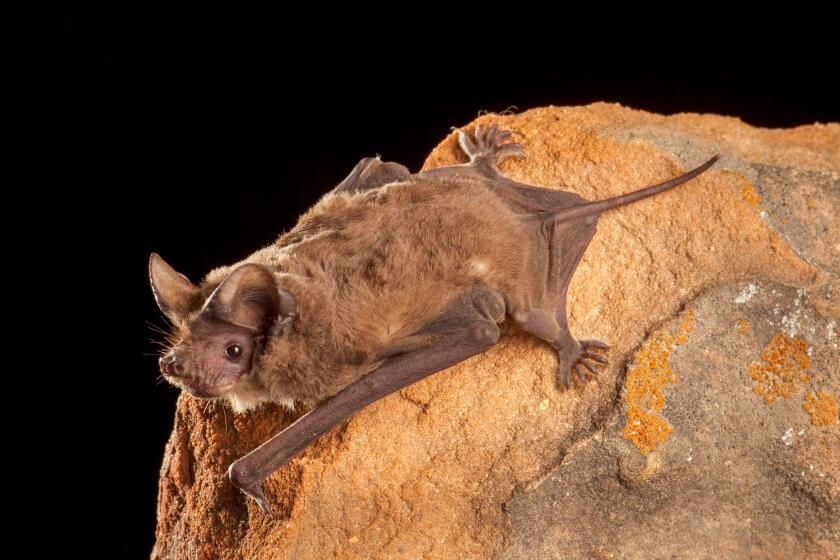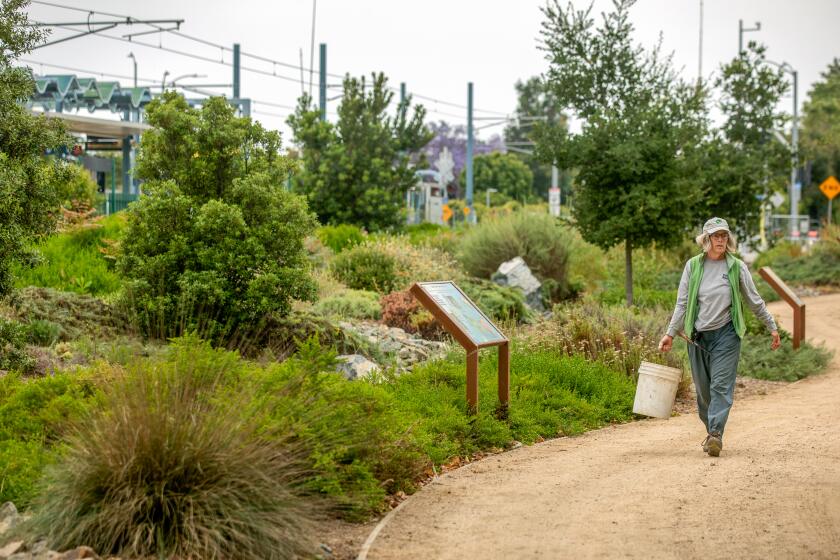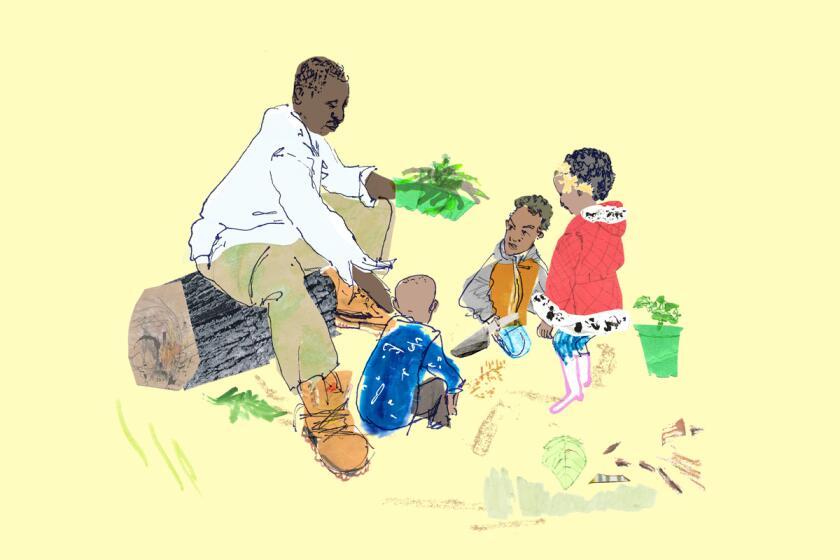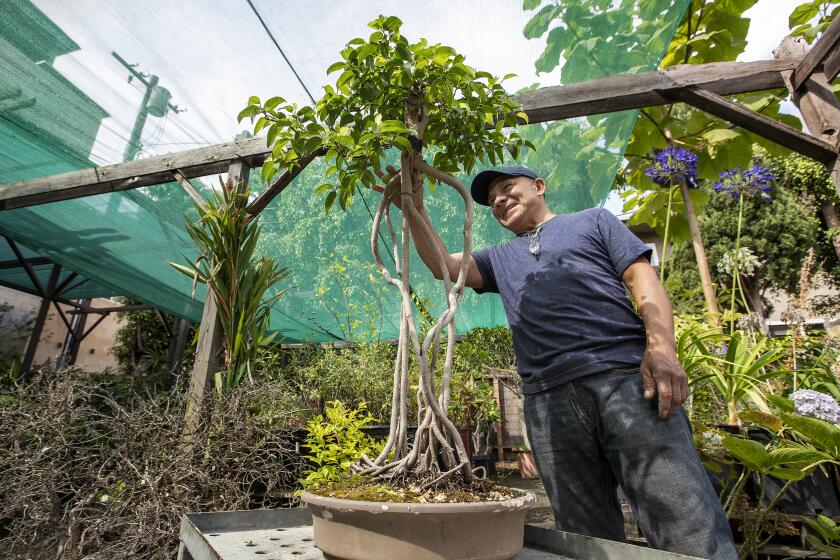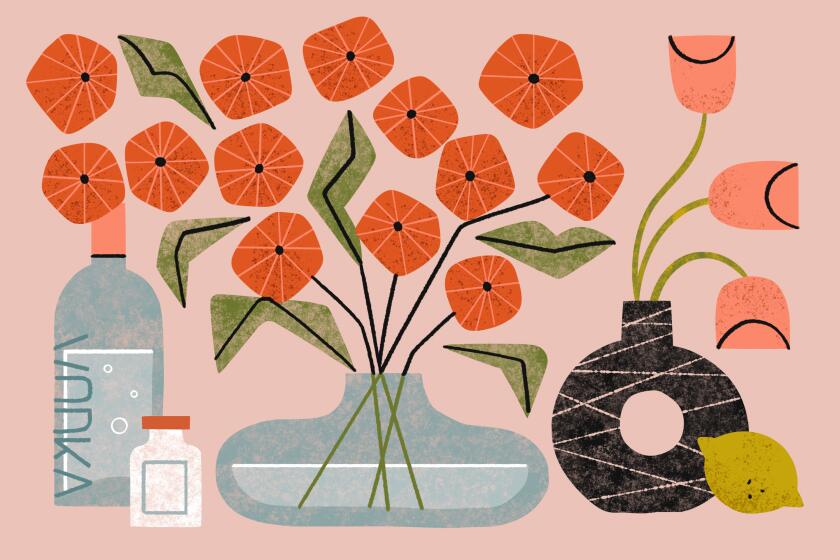Should we pick tomatoes when they’re green?
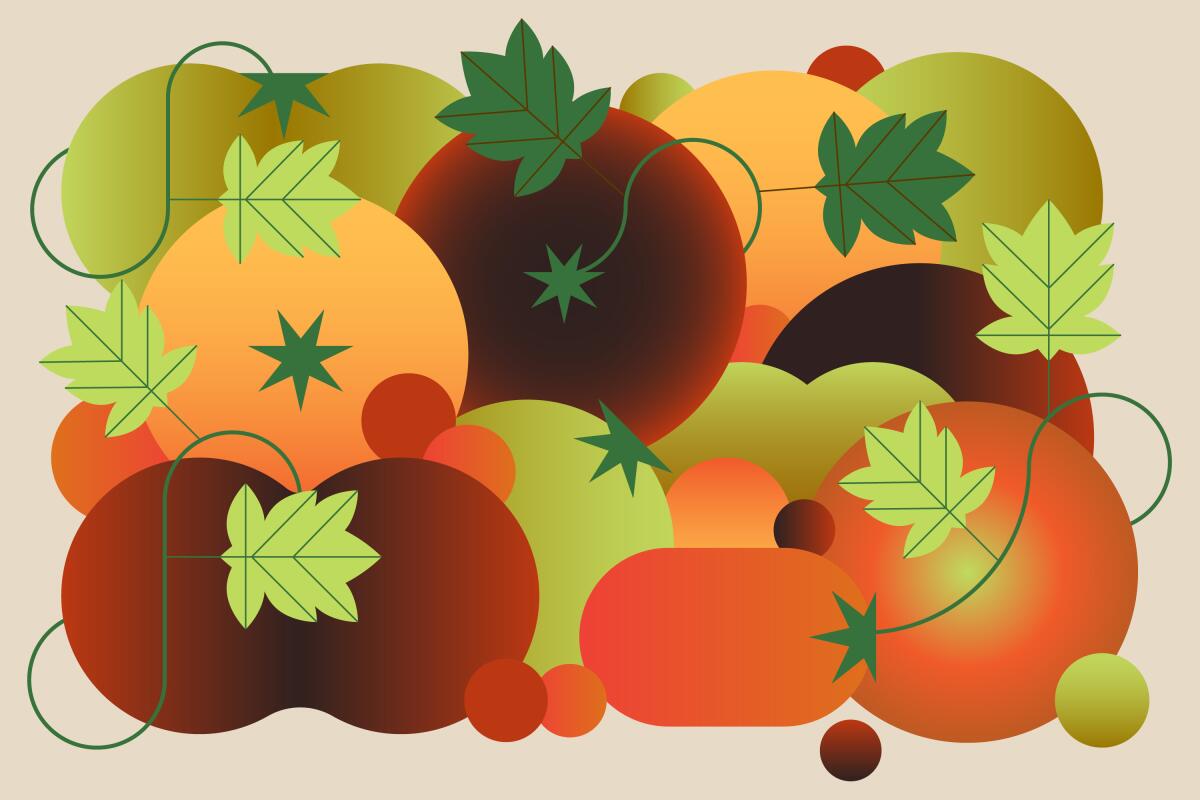
- Share via
Somehow it’s almost fall (in case those of you in the sweltering heat didn’t notice, or, like me in Ventura, are still waiting for summer...), and I have a long list of plant-related activities and upcoming events below.
But first, I want to address a question of critical importance to all home gardeners: When should you pick your tomatoes?
Sign up for our L.A. Times Plants newsletter
At the start of each month, get a roundup of upcoming plant-related activities and events in Southern California, along with links to tips and articles you may have missed.
You may occasionally receive promotional content from the Los Angeles Times.
I have a neighbor who swears they should be picked when green and allowed to ripen on the kitchen counter. I’ve been impatiently waiting for my tomatoes to ripen this year — slow going since the temperatures have stayed in the 70s here for most of the summer — but her advice seems to fly in the face of why I planted in the first place — to feast on succulent “vine-ripened” fruit.
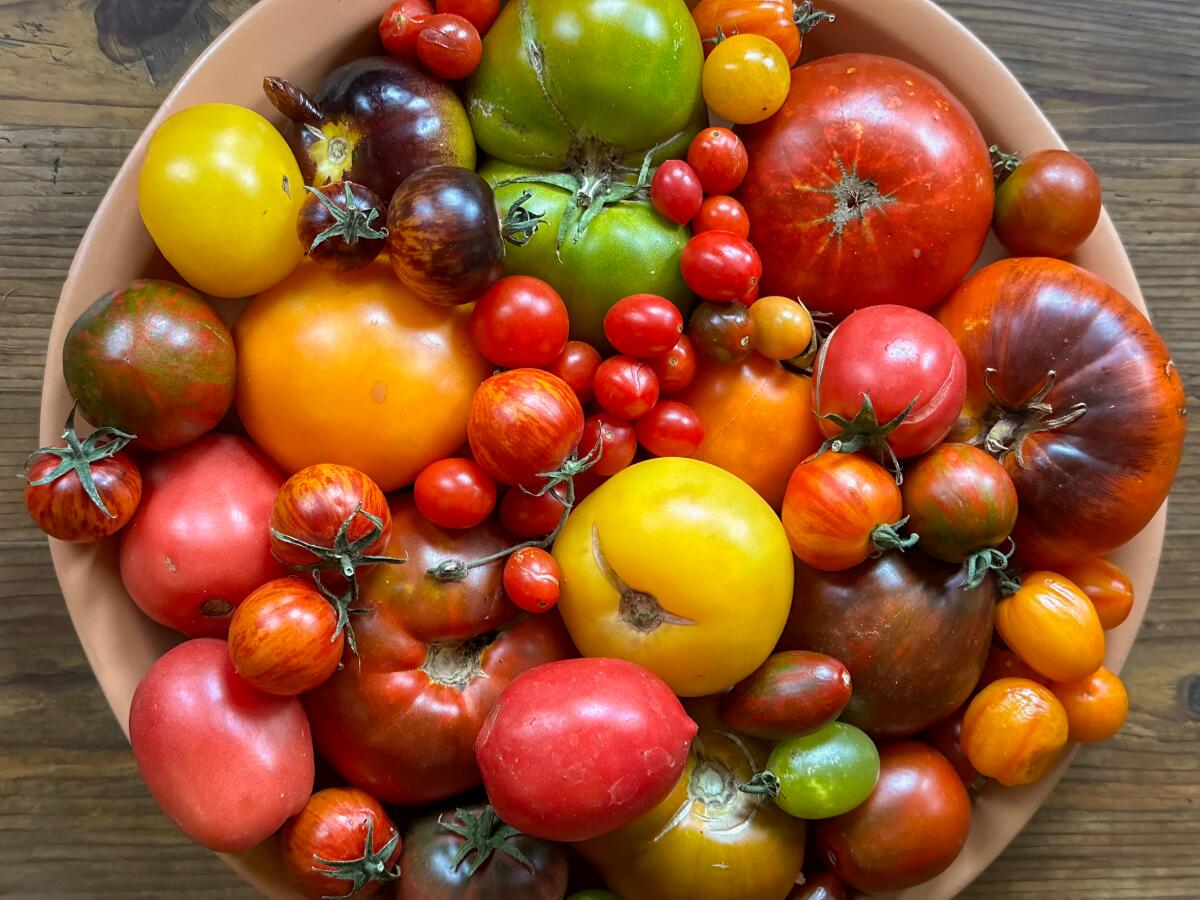
I consulted three experts — Scott Daigre, owner and operator of Tomatomania; Yvonne Savio, a longtime master gardener and creator of GardeningInLA.net; and farmer Lauri Kranz, co-owner of the LA Homefarm store in Glassell Park. To my relief, they all agreed that vine-ripened is best.
Bats are our friends. They were here when saber-toothed tigers roamed L.A., and they eat the bugs that drive us crazy, so they need habitat protection too.
But there’s a big caveat to that, said Daigre: “critters” that gobble up your garden at the optimum time for picking. This is a sore point for Daigre, who recently moved from a ranch on the wild outskirts of Ojai to a house in town, but not before losing 30 of his 50 chickens to a greedy mama bear teaching her cubs how to snack on “chicken a la squawk.”
He also blames squirrels for decimating a luscious new variety of paste tomato he was growing for seed. He said the only real defense against critters is to build a structure lined with quarter-inch hardware cloth, similar to Victory Garden L.A.’s boxes, that lets in sun and rain but deters animals.
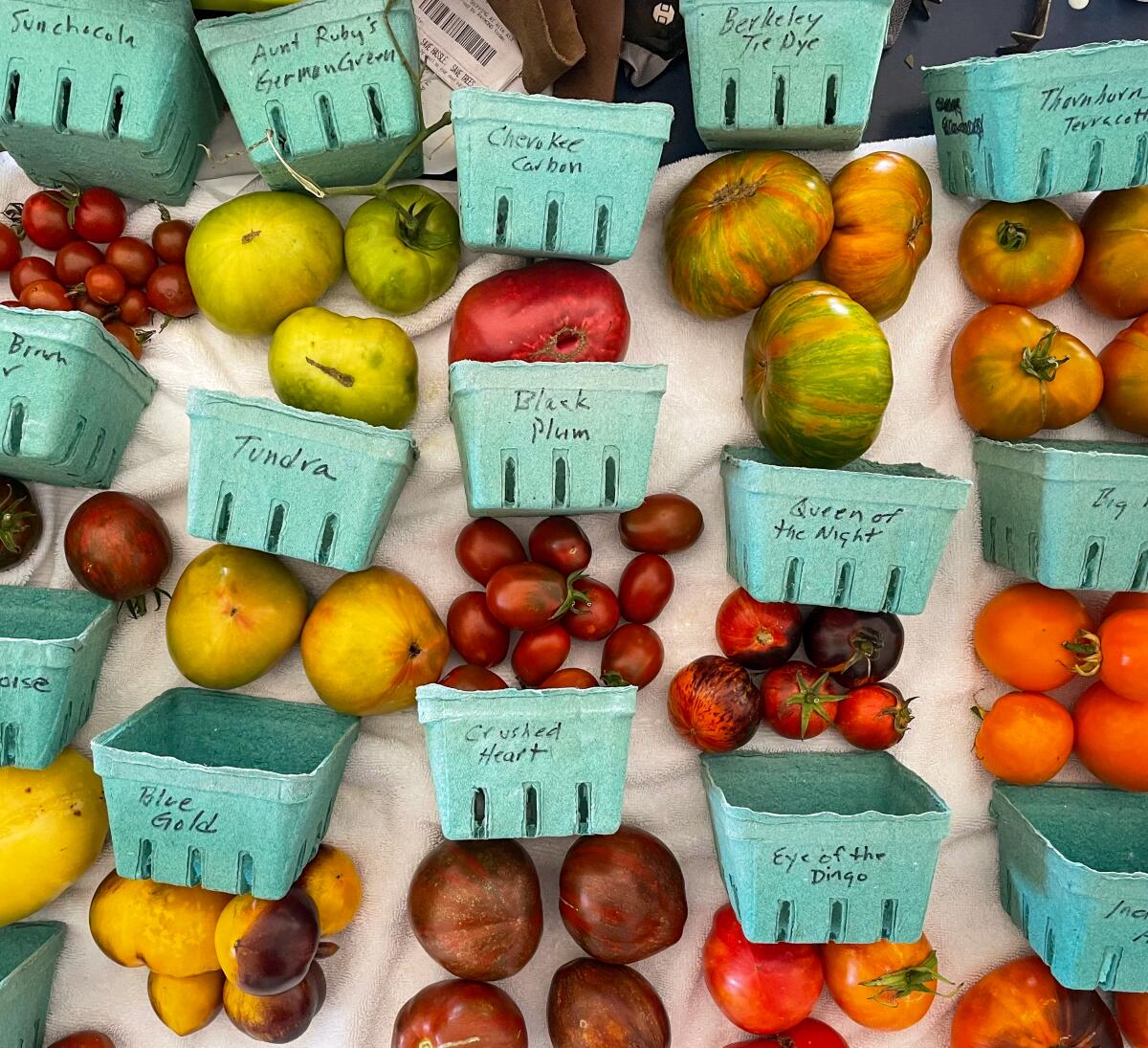
Unfortunately, such structures are often expensive and/or time-consuming, which is why many gardeners opt for something easier. While Daigre, Savio and Kranz agree that vine-ripened is best, pick your tomatoes before they’re ripe if you have a critter problem to ensure you get some of the crop.
Today’s lesson in L.A.’s changing landscapes is a modern-day parable about the joys and challenges of creating native habitats on public lands.
That doesn’t mean picking tomatoes when they’re green, which can more likely lead to them spoiling. Here are Daigre’s harvesting tips:
- Let it blush. Keep hard, green tomatoes on the vine until they develop a slight blush of red, orange or yellow on the bumpy shoulders near the stem. Even green varieties of tomatoes will have a faint yellowing as they’re preparing to turn color, he said.
- Be alert. The animals that want to savage your garden have a sixth sense about when fruit is ready to eat, so if you want to beat them to the punch, you must be vigilant and visit the plants regularly, even twice a day.
- Cut, don’t pull. Use clippers or scissors to cut the tomato off the plant above the bumpy part of the stem to avoid ripping the skin. Damaging the skin will cause the fruit to spoil instead of ripen.
- The size you see is what you’ll get. “Once a tomato starts to blush, it won’t get any bigger,” Daigre said.
- Counter time. Arrange your blushing tomatoes on a kitchen counter, away from direct sunlight, stem-side down and far enough apart that they aren’t touching. Then wait for them to ripen. A tomato at its peak will give to a gentle squeezing and have a deep, intense color.
- Know thy color. Be sure you know the optimum color for your variety, so you don’t wait for an orange tomato to turn red.
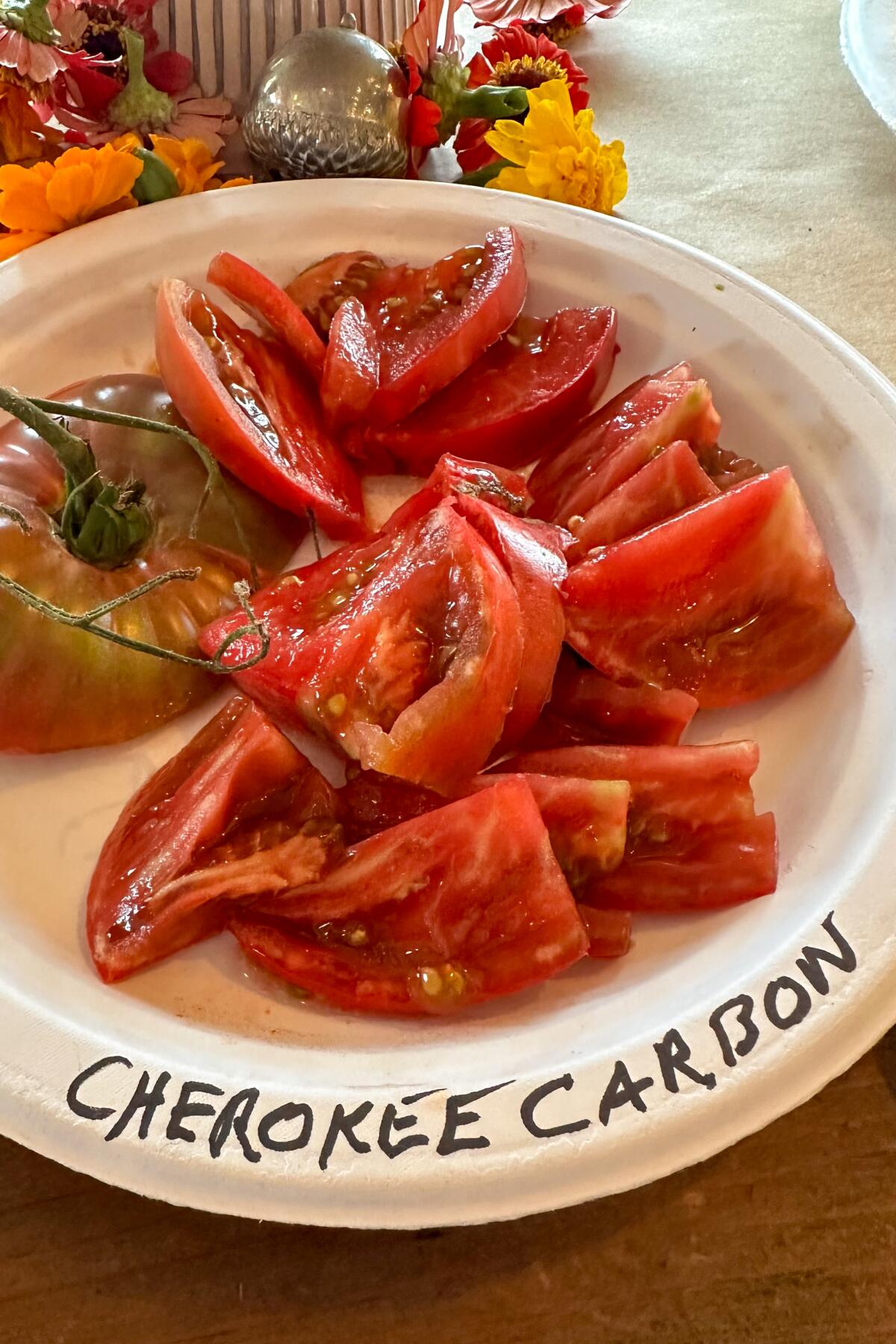
In a perfect world, where tomatoes can ripen unbothered on the vine, you can tell when the fruit is ready by its rich color and the way it feels, Savio and Kranz said.
Los Angeles County has more than 100 community gardens. Here is why you might want to join one and how to get started growing food and community.
Savio has a long line of tomato plants in her garden, and she walks through lightly squeezing any that have their expected color. If a tomato is hard, it’s not ready to eat, she said, “but if it gives a little bit, then it’s ready to pick.”
Kranz also recommends this technique. Color isn’t enough, she said. A ripe tomato feels softly plump and heavy in your hand, “and it wants to come off with a tiny twist — no tugging or pulling.”
Peaches, nectarines and plums have similar rules — when they soften up, it’s time to harvest. But most summer vegetables are different, said Daigre, Kranz and Savio, who published a detailed list of harvest tips for home gardeners in her August garden blog.
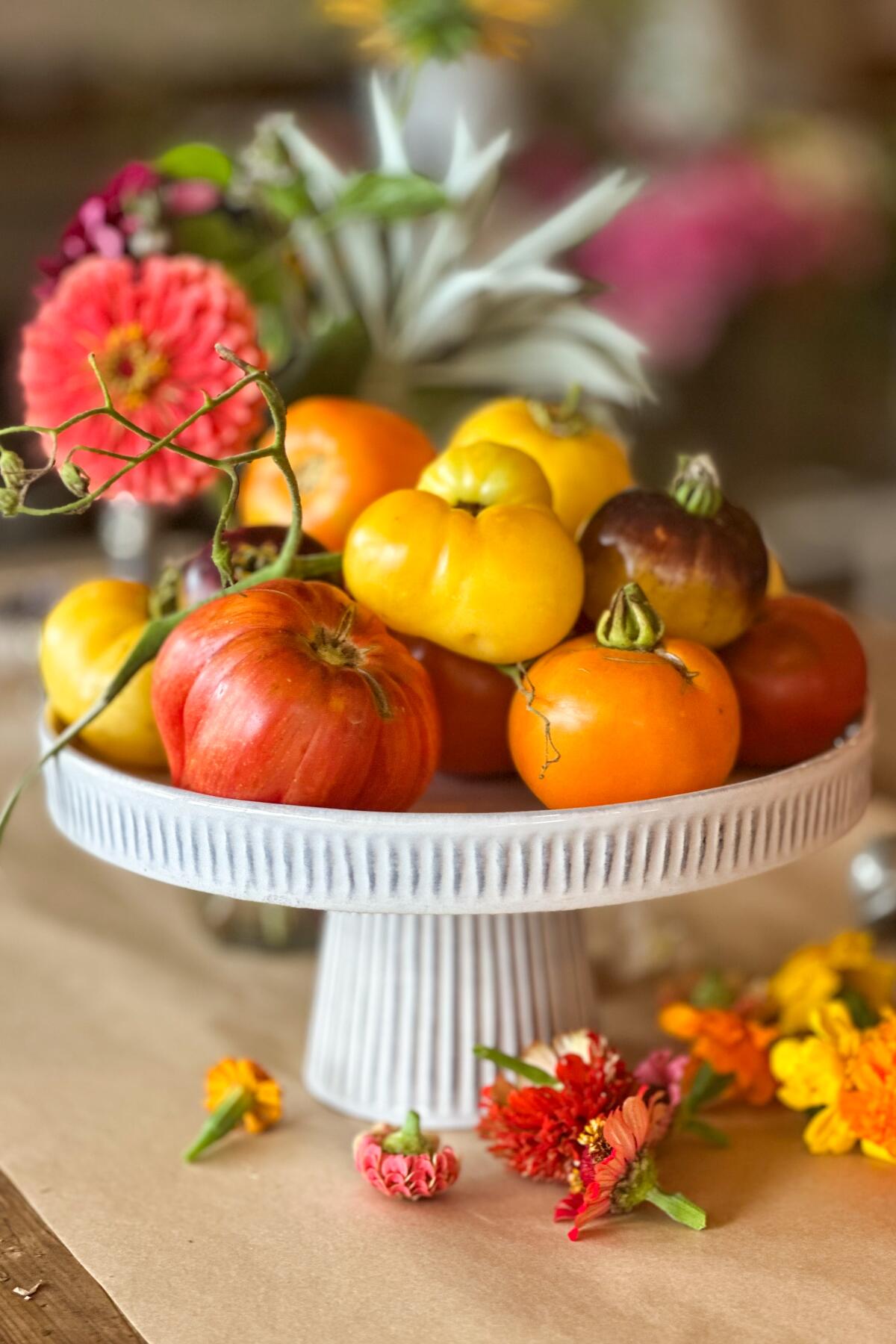
Here are their general tips for knowing when to harvest homegrown veggies:
- Big isn’t better. “It’s the American in us that wants to see how big we can get,” Daigre said, “but with squash, eggplant and even green beans, it’s not that smart. As veggies get bigger, their skins get tougher and their flesh gets seedy, woody and less flavorful. Best to pick these veggies when they’re smaller.” Eggplants in particular will have glossy skins, he said. If their skins go dull or turn yellow, they’ve grown way past their prime.
- Peppers are good anytime. As bell peppers mature, they can change color and flavor, Savio said. So if you prefer the taste of a green bell pepper to a sweeter red bell pepper, pick it when it’s young.
- Experiment. One of the joys of growing your own food is that you can try foods throughout the growing cycle, Savio said. “There aren’t any rules, really. It’s just what tastes best to you.” Kranz said she picks new tomato varieties at different stages of ripening to help her understand when they’re at peak flavor.
- Eat or preserve as soon as possible. Tomatoes can last on a counter for a few days, but many veggies start to deteriorate as soon as they’re picked, Daigre said. Have a plan for cooking those foods that night or preserving them for future use. Note that many veggies can easily be frozen for later use.
- No tomatoes in the fridge. Freezing tomatoes for future sauces is one thing, but never store a fresh tomato in the refrigerator unless it’s been cut or they will get mushy, said Savio. “Just leave them on a counter,” she said.
If you’re like me, your kitchen counters soon will be taken over by fruit and veggies. A tip from my friend Leslie: Try putting old wine corks around your tomatoes to ward off fruit flies. I’m trying it, and it seems to be working. At last, an easy use for all those old wine corks.
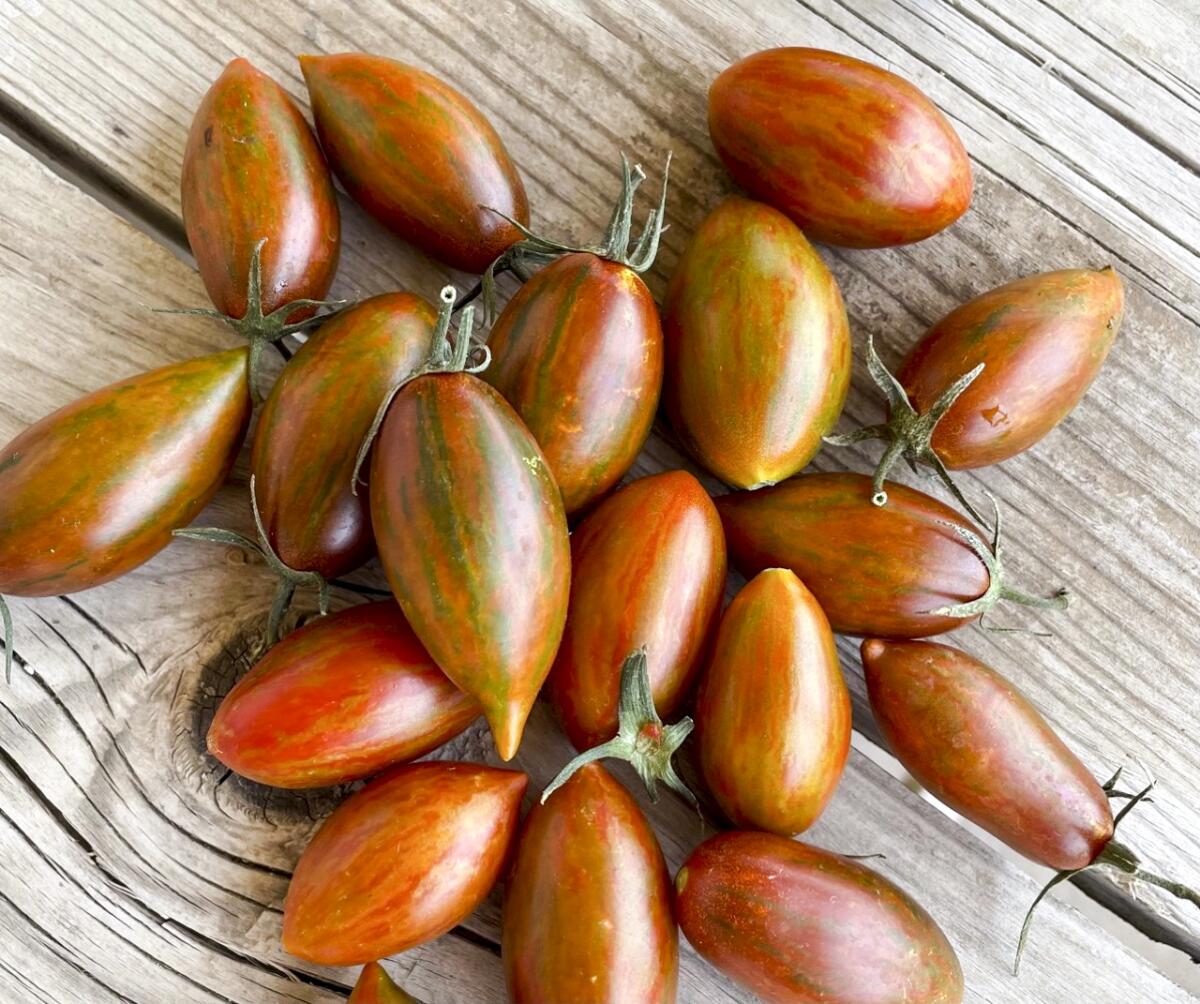
If, like me, you’re still waiting for your tomatoes to color up, join the club — Savio said she’s having the same problem in Pasadena. She has previously recorded harvests of more than 300 tomatoes by mid-August, but this year, “I think I’ve eaten four Sungold tomatoes so far and that’s it. It’s just that we had spring until about a month ago, so it hasn’t been warm enough to have the things ripen.”
Sign up for our L.A. Times Plants newsletter
At the start of each month, get a roundup of upcoming plant-related activities and events in Southern California, along with links to tips and articles you may have missed.
You may occasionally receive promotional content from the Los Angeles Times.
This month’s events
September should be a busy month for SoCal vegetable growers, especially with this year’s delayed harvests. Farmers markets should be brimming with produce too, so consider buying a bunch and hosting a prepping party to preserve for winter meals. Native plant lovers should use this month for planning (see many related classes below), since most native plant nurseries suggest waiting until mid- to late October for planting.
If you have an upcoming event you’d like to include in next month’s calendar, email the information to [email protected] by the third week of September, and we’ll try to include it. Feel free to share this email with friends, and encourage them to subscribe too.
Sept. 2, 9, 16, 23 & 30
Outdoor volunteer days to restore habitat at Palos Verdes Peninsula Land Conservancy, 9 a.m. to noon Sept. 2 and 30 at the Alta Vicente Reserve in Rancho Palos Verdes, Sept. 9 at the Agua Amarga Reserve in Rancho Palos Verdes Sept. 16 at the Abalone Cove Reserve in Rancho Palos Verdes and Sept. 23 at the White Point Preserve in San Pedro. Volunteers must register in advance. pvplc.volunteerhub.com
Sept. 3, 12, 17, 19 & 26
South Bay Parkland Conservancy Wilderness Park Work Days to water and weed existing habitat areas and prepare for planting later in the fall at Hopkins Wilderness Park in Redondo Beach. Volunteer slots are available from 10 a.m. to noon, with additional work sessions on Sundays from noon to 2 p.m. Wear clothes that can get dirty and closed-toe shoes and bring sun protection, water and snacks. Tools and gloves will be available. Conservancy volunteers must register online and sign a liability waiver. signupgenius.com
Sept. 2
Growing Waterwise at California Botanic Garden presents “Getting Started, Lawn Removal and More!,” a class to begin your native plant journey, taught by Executive Director Lucinda McDade from 10 to 11:30 a.m. at the garden (or via Zoom). Register online, $20 ($15 members). calbg.org
The San Fernando Valley Bromeliad Society presents “South American Bromeliads in Nature,” a talk by Cristy Brenner, past president of the Saddle Back Bromeliad Society, about her trip to South America, from 10 a.m. to 1 p.m. at the Sepulveda Garden Center in Encino. Members will also show and discuss their own bromeliads. First-time visitors can attend the meeting for free; membership is $15. San Fernando Valley Bromeliad Society
Sept. 3
Planting Natives for Fall Color, a free class from 3 to 4 p.m. at Plant Shop 805’s new store in Ventura. The class, taught by nursery manager Thomas Baker-Rabe, outlines native plants that thrive in the region and provide food for pollinators in the fall. Register online. eventbrite.com
Sept. 9, 23
Growing Works public retail sale of native plants and succulents, 10 a.m. to 2 p.m. at the normally wholesale-only nursery in Camarillo. Admission is free. turningpointfoundation.org
Palos Verdes Peninsula Land Conservancy Nursery native plant sales, 10:30 a.m. to 1 p.m. both days; at the George F. Canyon Nature Center in Rolling Hills Estates on Sept. 9 (and the second Saturday of the month thereafter) and the White Point Nature Education Center in San Pedro on Sept. 23 (and the fourth Saturday of every month thereafter). plpvc.org
Native Plant Knowing & Growing: An intro to 10 Ventura County native plants, a free, two-day class at 11 a.m. each day (10 a.m. for Spanish speakers) at the Community Roots Garden in Oxnard. Participants will learn the traditional and modern uses of 10 plants native to the county, how to collect their seeds and how to grow them. The classes will be taught by members of the Santa Monica Mountains Fund. Register online. samofund.org
Sept. 9
Growing Waterwise at California Botanic Garden presents “Hands-On Seed Propagation,” a class taught by the garden’s Grow Native Nursery Manager Mariana Ramirez Rodriguez, from 9 to 11 a.m. at the garden’s nursery in Claremont. Participants will leave with a flat of seeds sown during the class and tips about how to grow them. Register online, $30 ($25 members). calbg.org
UCLA Mildred E. Mathias Botanical Garden Tour, a free guided tour through the botanic garden from 10 to 11 a.m., starting at La Kretz Garden Pavillion at UCLA in Westwood. Plan on arriving early. Register online. eventbrite.com
Carbon Culture hands-on hugelkultur workshop, 8:30 a.m. to 12:30 p.m. in Sierra Madre. Participants will learn the Studio Petrichor method for building water-saving hugelkultur berms and lasagna mulching. The exact location will be announced to ticket holders three days before the event. The $40 workshop includes lunch. Participants who pay $200 can use this workshop as part of the Petrichor method hugelist certification program. eventbrite.com
DIY Landscape Design for California Native Gardens, a free workshop in creating a native plant habitat garden from 9 a.m. to noon at the Chino Basin Water Conservation District’s Waterwise Community Center in Montclair. cbwcd.org/workshops
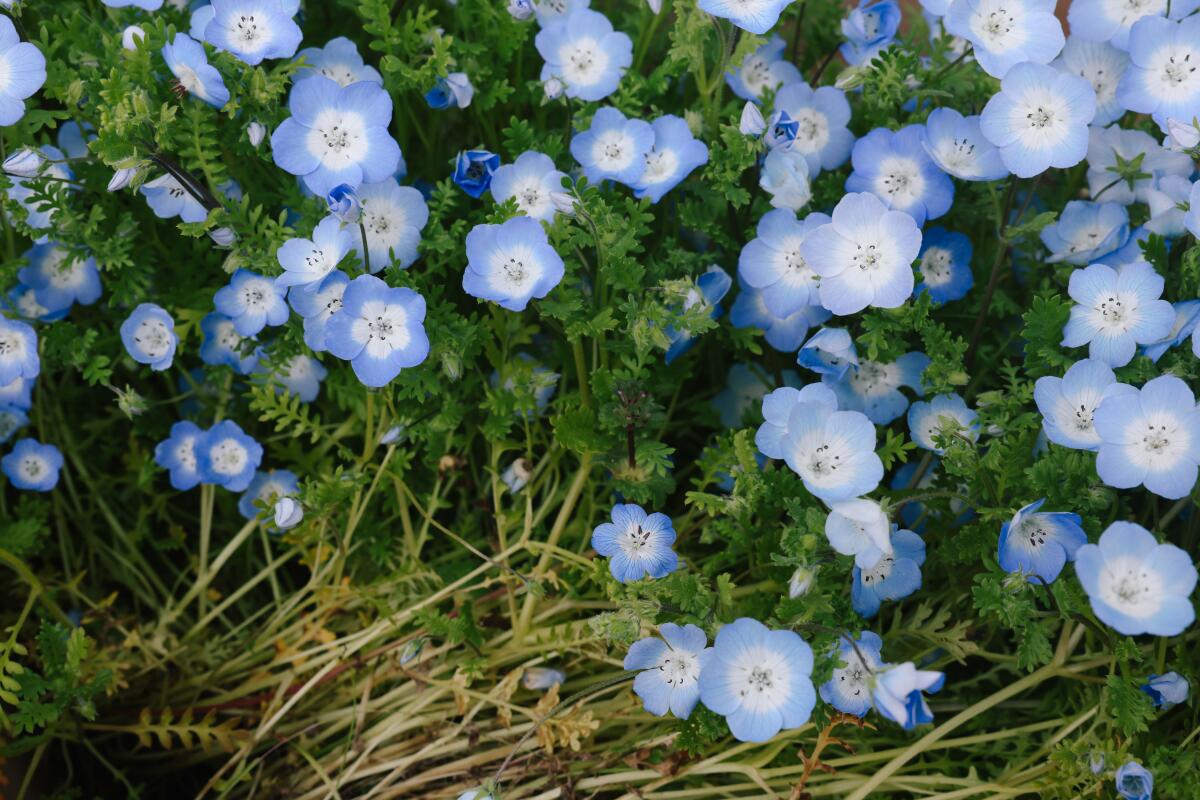
Sept. 10
Summer Camp for Adults: Naughty by Nature!, from 4 to 8 p.m. at the Los Angeles County Arboretum & Botanic Garden. This half day of adult “camp” includes lessons about the botany of love and lust, “adult juice boxes” filled with wine, a light dinner of nostalgic childhood favorites and a fun science experiment. “Campers” must be 21 or older. Register online, $55. arboretum.org
South Coast Cactus & Succulent Society presents a “Soil and Staging Workshop” conducted by succulent collector Peter Walkowiak from 1 to 4 p.m. in Frances Young Hall at the South Coast Botanic Garden in Rolling Hills Estates. southcoastcss.org
Sept. 12-14
The 10th National Heirloom Exhibition 2023, a.k.a. the world’s fair of pure food, will celebrate the history, preservation and cultivation of heirloom seeds, vegetables and flowers free from genetic modification from 9 a.m. to 9 p.m. at the Ventura County Fairgrounds in Ventura. Tickets are $15 a day, or $30 for a three-day pass (children 17 and under enter for free). theheirloomexpo.com
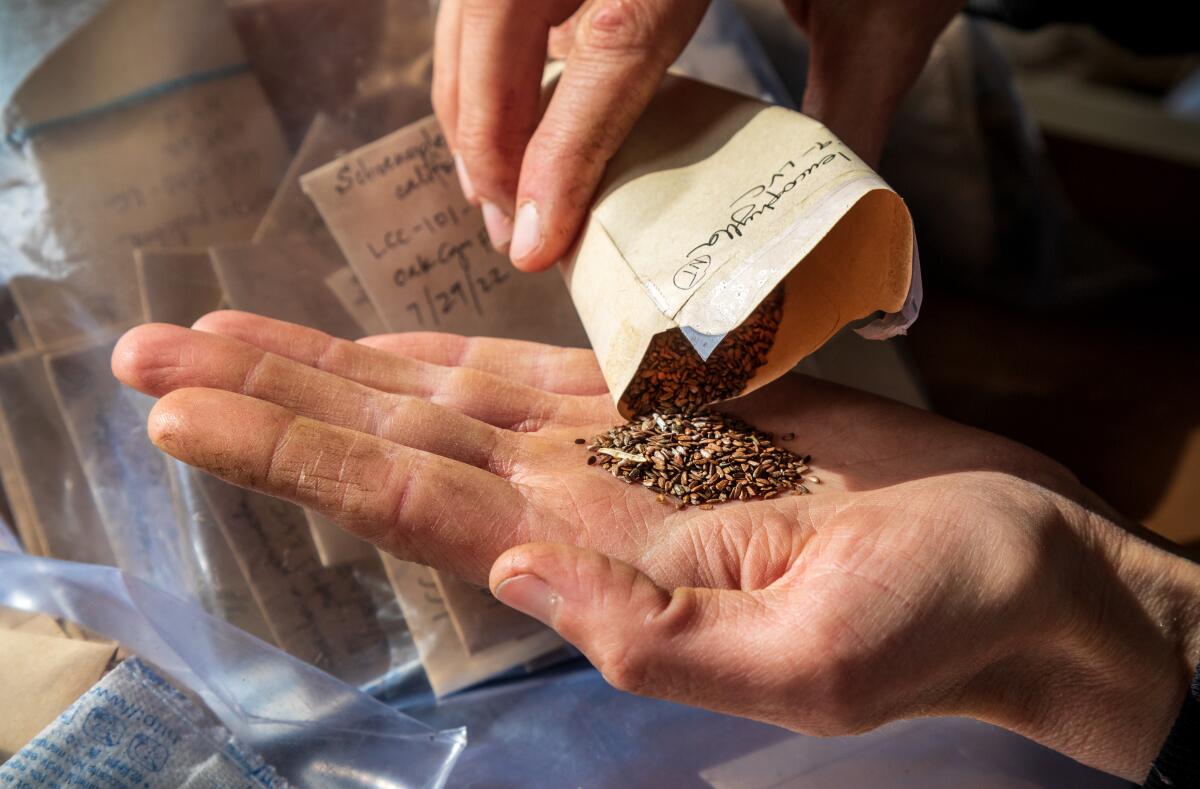
Sept. 12
Orange County Organic Gardening Club Fall Bonanza seedling exchange, an annual event where club members receive containers, soil, seeds and instructions to plant a flat of vegetable seedlings at home. Participants will bring their seedlings back on Oct. 10 for an exchange with other members. Newcomers can pay the $30 dues at the meeting by cash or check if they want to join. The club meets the second Tuesday of every month at 7 p.m. in the Silo Building at the Orange County Fairgrounds in Costa Mesa. californiagardenclubs.com
Sept. 14
“Hot and Cool New Plants,” a panel discussion hosted by the Southern California Horticultural Society, 7 to 10 p.m. in the Botanical Center at the Huntington Library, Art Museum, and Botanical Gardens in San Marino. Panelists Tim Becker, horticulture director at the Theodore Payne Foundation, Nicholas Staddon of Everde Growers and Kathy Musial, curator of living collections at the Huntington, will share their thoughts about cool new plants on the market this fall. Admission is free. socalhort.org
A talk about the Huntington Library, Art Museum, and Botanical Gardens’ Desert Garden renovation project, 2:30 to 3:30 p.m. in the Huntington’s Ahmanson Classroom in the Botanical Center. Curator John Trager will discuss the project, including planned upgrades to the Desert Garden Conservatory. The talk is free with an online reservation and includes admission to the Huntington after 2 p.m.. A plant sale follows the talk. huntington.org
Introduction to Landscape Renovation for Waterwise Home Gardens, a free workshop on how to plan a landscape transformation and collect on local rebates, from 6 to 8:30 p.m. at the Chino Basin Water Conservation District’s Waterwise Community Center in Montclair. cbwcd.org/workshops
Oaxacan-born Miguel Hernandez is the resident bonsai artist at Sawtelle’s historic Yamaguchi Nursery
Intro to Gardening: Make Your Own Succulent Garden, 5:30 to 7 p.m., sponsored by Jessica Lin of Beyond the Body LLC in Redondo Beach. The workshop for people “from all walks of life and different body types/abilities” features instructions on creating a small succulent garden. Register online, $45 for “queer folks,” $55 for “non-queer folks (a.k.a. Allies)”. eventbrite.com
Sept. 16-17
Southern California Begonia Society Begonia Plant Show & Sale, 10:30 a.m. to 4 p.m. at the Sherman Library & Gardens in Corona del Mar; includes a large variety of begonias grown by members. Many will be available for purchase. The show is free with $5 admission to the gardens. (Members and children 3 and under enter free). thesherman.org
South Bay Orchid Society fall show and sale, from 10 a.m. to 4 p.m. both days at the Palos Verdes Art Center in Rancho Palos Verdes. The show includes displays by local award-winning orchid growers and California commercial growers selling orchids and a variety of companion plants. Admission is $5, children under 12 enter free. southbayorchidsociety.com
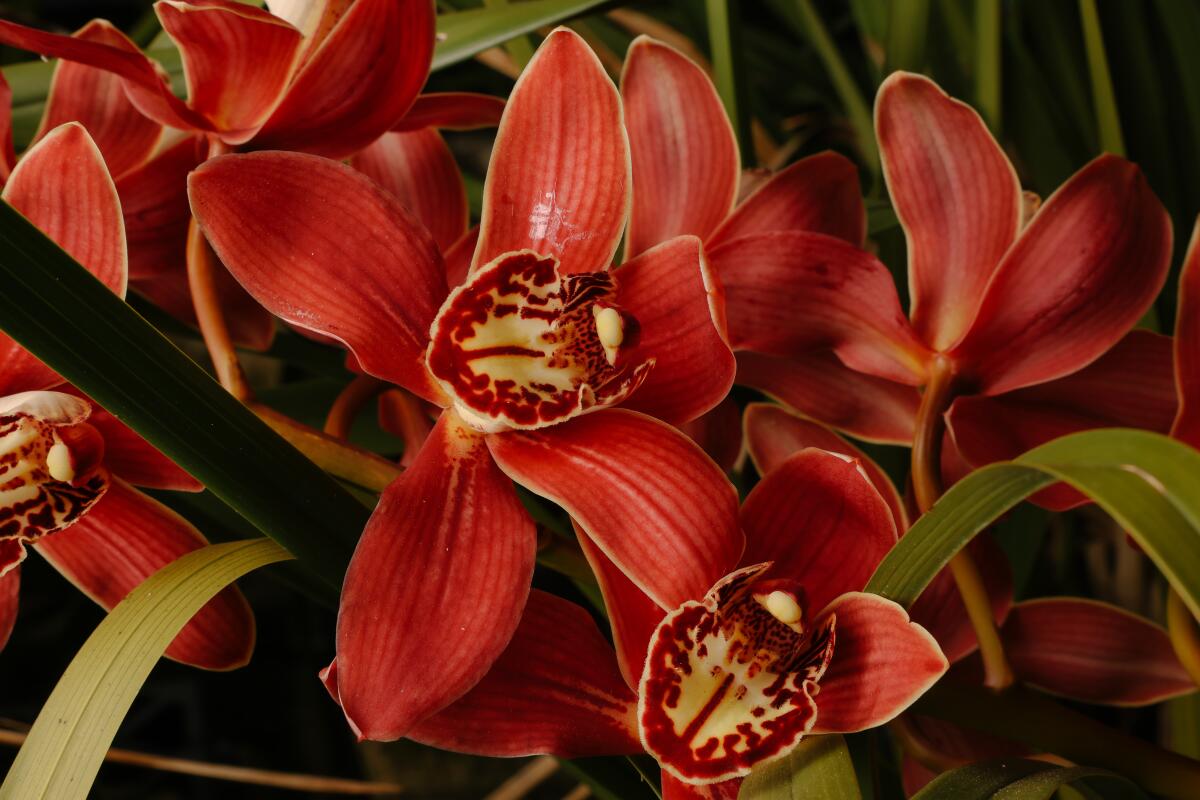
Sept. 16
The Los Angeles County Arboretum & Botanic Garden presents Boozy Botany, a “uniquely educational experience” that combines historical tidbits about humans and alcohol with tastings of some “favorite alcohol elixirs” from 5:30 to 7 p.m. at the Arboretum in Arcadia. Participants must show IDs to prove they are 21 or older. Pre-registration required online, $30 ($25 members). arboretum.org
Sept. 19
The Organic Garden Club of Ventura County hosts Camila Guzman, the “Queen of Compost,” who will be sharing her worm bin for a composting demonstration during the club’s monthly meeting from 6 to 8 p.m. at the Newbury Park Library. Member and master gardener Laura Pasetta will also talk about the healthful benefits of eating organic food from your garden. Admission is free. organicgardenclubofventuracounty.org
Do your blooms need aspirin, vinegar or a penny dated before 1980? Here’s what experts say is really necessary to keep your bouquets looking fresh.
Sept. 20
Comprehensive Irrigation for California Native Plants, a workshop taught by Theodore Payne Foundation Director of Horticulture Tim Becker, 9 a.m. to noon at the foundation’s classroom and gardens in Sun Valley. Register online $65 ($55 for members). eventbrite.com
Sept. 22-24
42nd Fascination of Orchids International Festival of Orchids & Exotic Plants, 10 a.m. to 4 p.m. each day at the Santa Ana Zoo. The festival includes plants on display and plants for sale. Admission is free with a $6 ticket to the zoo ($4.50 for seniors 60+). fascinationoforchids.com
Sept. 22
Propagating California Native Plants From Seed, a hands-on workshop taught by Theodore Payne Foundation Director of Horticulture Tim Becker, 9 a.m. to noon at the foundation’s nursery in Sun Valley. All materials will be provided. Register online, $85 ($75 members). eventbrite.com
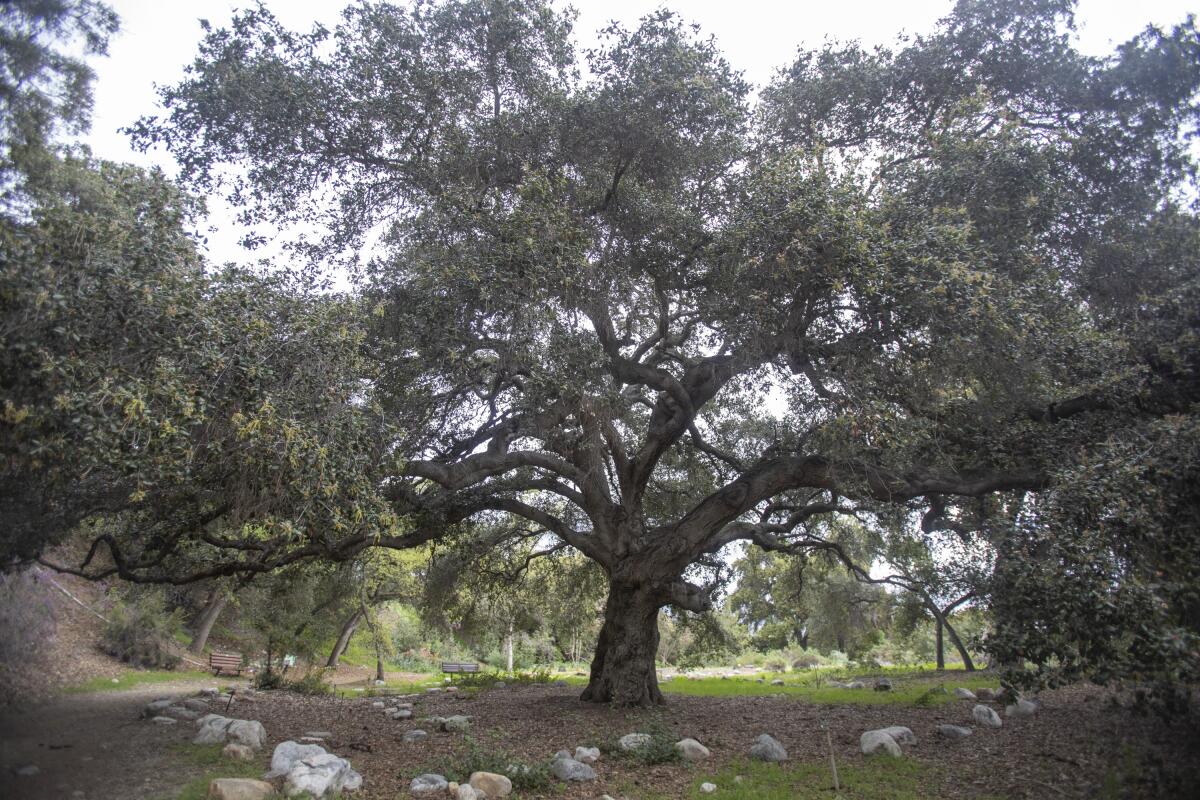
Understanding Oaks: A tree walk and talk with arborist Alison Lancaster, 9 to 11 a.m. at the Theodore Payne Foundation gardens in Sun Valley. Register online, $35 ($25 members). eventbrite.com
California Native Tree Maintenance: A Walk and Talk class with arborist Alison Lancaster,
1 to 3 p.m. at the Theodore Payne Foundation gardens in Sun Valley that include Torrey pine, palo verde, Santa Cruz island ironwood and sycamores. Register online, $35 ($25 members). eventbrite.com
Sept. 23 & 30
UC Cooperative Extension Master Gardeners of Orange County present a Landscape Design Workshop, a two-day event from 9 a.m. to noon each day at the UC South Coast Research & Extension Center in Irvine to help participants create a sustainable landscape with California native plants. Register online, $50. mgorange.ucanr.edu
Sept. 23
Community Service Day at Descanso Gardens, 8 to 10 a.m. at the garden in La Cañada Flintridge. Volunteers 16 and older will get hands-on instruction in mulching and other garden maintenance. Participants should expect moderate to heavy lifting, bending and standing for long periods of time. They should bring gardening gloves water, and wear comfortable clothing and closed-toe shoes. Volunteers must register by Sept. 16 and sign a liability waiver. descansogardens.org
Succulent Propagation, a free workshop at 10 a.m. at the Growing Works Nursery in Camarillo. It will be taught by Marquita Ellias, a member of the Cactus and Succulent Society of America and former vice president of the Conejo Cactus and Succulent Society. Preregistration is requested. eventbrite.com
Renovating Lawn Sprinklers for Waterwise and California Native Gardens, a free workshop on how to alter your irrigation system, or ditch it altogether, from 9 a.m. to noon at the Chino Basin Water Conservation District’s Waterwise Community Center in Montclair. cbwcd.org/workshops
Sept. 28-30
International Plumeria Conference, 9 a.m. to 5 p.m. all days at the Los Angeles County Arboretum & Botanic Garden. The event, co-sponsored by the Plumeria Society of America, includes guided tours of the Arboretum’s plumeria groves, along with best practices from experts, an authentic Hawaiian luau and feast, lunch and a welcome reception. Register online for $350 ($300 for Arboretum members) by Sept. 15. arboretum.org
In the era of climate change and drought, green grass has become a public scourge. Still, I went looking for reasons to keep my traditional frontyard.
Sept. 28
Fire-Resilient Gardens: A Maintenance Walk and Talk class, 9 to 10:30 a.m. at the Theodore Payne Foundation in Sun Valley. Nursery staffer Erik Blank will demonstrate how to prune and maintain your garden for wildfire safety. Participants should wear closed-toe shoes and long pants and be ready for an hour of walking on sometimes steep and uneven terrain. Water bottles and sun protection are encouraged. Register online, $15 ($12 for members). eventbrite.com
Sept. 30
Altadena Community Garden Annual Picnic returns from noon to 6 p.m. at Loma Alta Park in Altadena, with a BBQ, garden produce, activities for children, live music and tours of the 2.5-acre community garden, which is celebrating its 50th year. Tickets are available online for $15 (children 10 and younger enter free). altadenacommunitygarden.com
Plant Plug Garden Party & Seed Swap, 3 to 9 p.m. at the Project 43 Team Post Center in Hyde Park, includes workshops in plant propagation, plant care and how to create your own urban jungle. Participants can bring seeds and plants to share. Register online, $25 ($11 if purchased by Sept. 23). eventbrite.com
What we’re reading
- Thirty-year-old Brandon Tam fell in love with orchids as a child in his grandmother’s Baldwin Park garden. Now, as the associate curator of the orchid collection at the Huntington Library, Art Museum, and Botanical Garden, he talks about their “magical powers.”
- Miguel Hernandez is the Oaxacan-born cook caring for Yamaguchi Nursery’s historic bonsai collection, and his story, tenderly written by Times columnist Frank Shyong, reads like leafy poetry.
- Daniel Choto built his life around plants after he fled El Salvador in 1979. During the pandemic, he and his wife, Betty, built a greenhouse in their Torrance backyard to grow exotic plants. The project also inadvertently strengthened family ties.
- Plants also helped bring these siblings together after years of going their separate ways, in another lovely Plant PPL story by Times Features intern Anna Braz.
- Times reporter David Wharton weighs in on SoCal’s fierce debate about removing lawns.
- Tired of wringing your hands about climate change? Here’s a resource guide of things you can do to make a difference.
- Community gardens can be a tough nut to crack if you’re trying to get a spot, but we’ve demystified the process with this helpful explainer.
- After her miscarriage, she couldn’t get out of bed. Then a friend gave her a little succulent plant, and she found a way to heal.
- Finally, I had lots of feelings reading Corinne Purtill’s intriguing look at the climate crisis, includingfear, shame that I haven’t done more and relief that scientists are feeling my anxiety too. But in the end, I left inspired to do more to stop climate change.
Sign up for The Wild
We’ll help you find the best places to hike, bike and run, as well as the perfect silent spots for meditation and yoga.
You may occasionally receive promotional content from the Los Angeles Times.
